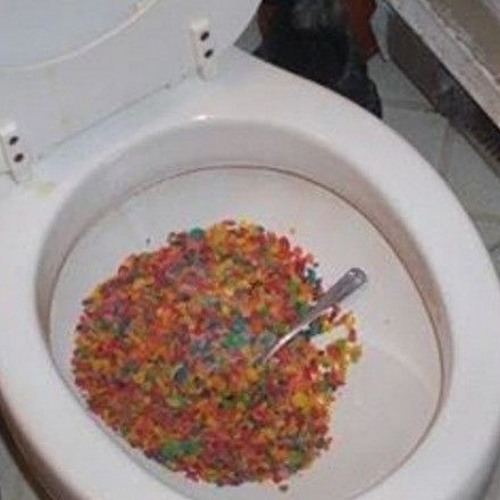Are You Able to Flush Food in the Toilet?
Are You Able to Flush Food in the Toilet?
Blog Article
The content further down pertaining to Think Twice Before Flushing Food Down Your Toilet is particularly insightful. Read it for your own benefit and figure out what you think of it.

Intro
Many individuals are often faced with the issue of what to do with food waste, particularly when it comes to leftovers or scraps. One usual concern that emerges is whether it's fine to flush food down the toilet. In this article, we'll delve into the reasons why individuals may consider purging food, the repercussions of doing so, and alternate approaches for appropriate disposal.
Reasons why people could take into consideration purging food
Lack of recognition
Some individuals may not be aware of the possible harm triggered by flushing food down the commode. They might mistakenly believe that it's a harmless method.
Ease
Purging food down the commode might seem like a fast and very easy remedy to taking care of undesirable scraps, specifically when there's no close-by garbage can offered.
Idleness
In some cases, individuals may just pick to flush food out of sheer idleness, without considering the repercussions of their activities.
Repercussions of flushing food down the toilet
Ecological impact
Food waste that ends up in rivers can contribute to air pollution and injury aquatic ecosystems. In addition, the water used to flush food can strain water resources.
Plumbing issues
Purging food can cause clogged up pipelines and drains pipes, creating pricey pipes repairs and troubles.
Kinds of food that must not be flushed
Coarse foods
Foods with coarse appearances such as celery or corn husks can obtain tangled in pipelines and cause clogs.
Starchy foods
Starchy foods like pasta and rice can soak up water and swell, bring about clogs in pipelines.
Oils and fats
Greasy foods like bacon or food preparation oils must never ever be flushed down the commode as they can solidify and create obstructions.
Appropriate disposal methods for food waste
Utilizing a waste disposal unit
For homes furnished with waste disposal unit, food scraps can be ground up and purged via the pipes system. Nevertheless, not all foods appropriate for disposal in this way.
Recycling
Specific food packaging materials can be reused, minimizing waste and lessening environmental effect.
Composting
Composting is an eco-friendly way to throw away food waste. Organic products can be composted and utilized to enrich soil for horticulture.
The value of appropriate waste administration
Decreasing ecological harm
Correct waste administration techniques, such as composting and recycling, assistance reduce air pollution and preserve natural resources for future generations.
Securing plumbing systems
By staying clear of the technique of flushing food down the bathroom, home owners can stop costly plumbing fixings and preserve the stability of their plumbing systems.
Final thought
To conclude, while it may be appealing to flush food down the toilet for convenience, it is very important to recognize the possible repercussions of this action. By taking on appropriate waste management techniques and taking care of food waste responsibly, individuals can add to healthier pipes systems and a cleaner environment for all.
FLUSH FOOD DOWN THE TOILET?
FLUSHING FOOD CAN CAUSE BLOCKED DRAINS IN YOUR HOME
All of the plumbing fixtures in your home are connected to the same sewer pipe outside of your home. This outdoor sewer pipe is responsible for transporting all the wastewater from your home to the Council sewer mains. Even small pieces of food that go down the kitchen sink can cause problems for your sewer. It should therefore be obvious that flushing larger bits of food, such as meat, risks a clog in either the toilet itself or the sewer pipes. Flushing greasy food is even more problematic because oil coagulates when it cools, coating the interior lining of your pipes.
THE TOILET IS NOT A BIN
Food isn’t the only thing that people shouldn’t be flushing down the toilet. People use the toilet to dispose of all kinds of things such as tampons, makeup wipes, dental floss, kitty litter and even underwear. Water goes to great lengths to educate residents about the high costs and stress placed on wastewater treatment systems simply from people flushing the wrong stuff down the toilet. It costs taxpayers millions of dollars each year, and homeowners thousands in blocked drain repairs.
FLUSHING FOOD IS A WASTE OF WATER
Flushing food is a waste of our most precious resource - water. In June this year Level 1 water restrictions were introduced to protect water supply from drought conditions. Much of New South Wales continues to be affected by prolonged drought with recent figures revealing up to 97 per cent of the state remains in drought. Depending on whether you have a single or dual flush toilet, every single flush uses between five and 11 litres of water. In the current climate this is a huge amount of water to be wasting on flushing food that should be placed in the bin (or better yet, the compost).
https://www.jabplumbingsolutions.com.au/blog/can-you-flush-food-down-the-toilet

I am just very intrigued by Think Twice Before Flushing Food Down Your Toilet and I am hoping you enjoyed our post. Sharing is good. You never know, you will be doing someone a favor. Thank you so much for your time spent reading it.
Click Here Report this page